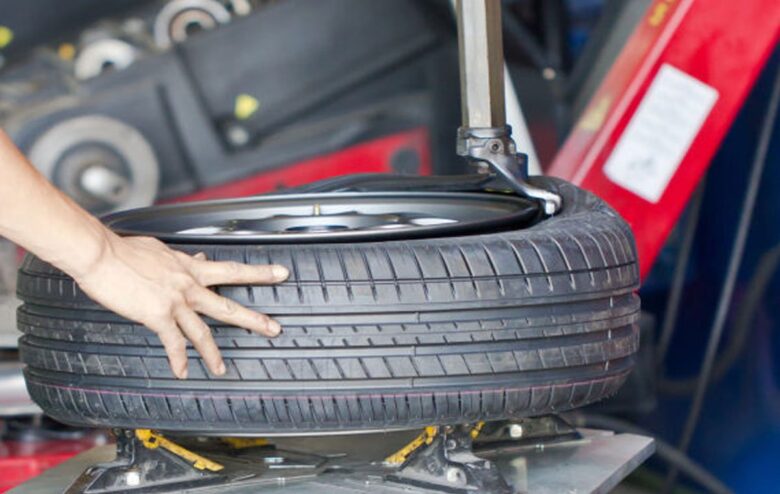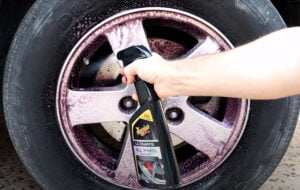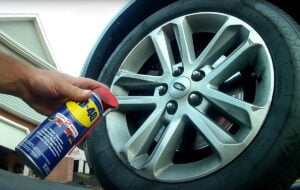If you have a punctured tire, the cheapest way to fix it is to getting a tire patched. This way, you will be able to use your existing tire again with a fraction of amount of buying a new tire. However, the cost of tire patch can differ from the materials used to who are going to repair it.
Do-It-Yourself tire patch repair can cost you around $6 since you’re just bearing the cost of materials. Alternatively, if you will take it to a repair shop, the cost will be between $10-$40, which includes the material used, the wage of labor, and other charges.
You may want to get the job done yourself rather than taking it to the tire shop, the reason is the upfront costs. However, before going to your nearest store in order to buy a tire patch, you should make sure that if your damaged tire is still worthy of repair. You also have to determine whether you can do it yourself or get an experience mechanic for it.
Tire Patch Cost Break Down
The cost of tire patching in service shops can be different for every shop. What remains the same is the composition of pricing. It includes the cost of patching material, the labor charges of mechanic, and other tasks that may be needed before or after the tire patching.
Mechanic’s labor costs
Keep in mind that you are paying for the time of mechanic that is allotted to her/him for repairing based on his/her expertise. The average labor rate for mechanics can be between $100 to $120 per hour. Let’s suppose a tire patch would take twenty minutes (quarter of an hour), that is equal to $25-$30.
Costs of material
As we mentioned the price of tire patch which was $6 based on a retail average. Alternatively, tire shops do shopping in bulk in order to save money on cost. What makes them different is their mark-up and other materials such as vulcanizing cement or/and sealant.
Other job orders other than tire patching
Rebalancing may be needed for a blow-out tire, so there will be addition of $10 for another labor. Before you go for other related repairs, it will be good to ask and confirm from your shop’s mechanic other than patching for the puncture.
The cost of having a tire patched will be associated greatly with the cost of the time your tire is handled by a mechanic. In short, you will need to pay for their skills rather than only for the materials. You should also think about investing in the equipment they usually use such as tire changer machine which takes out the tire from the wheel.
Is Your Tire Beyond Repair?
Since all punctures are unique in nature, if they are not same then all of them cannot be repaired. To find out if your tire can still be patched and function as intended, your mechanic will perform certain check in order to verify the gravity of damage. It includes the inspecting the distance of the puncture to the sidewall and checking the severity of the damage.
Check if the puncture is near to the sidewall
The question arises, how close? The puncture should not be as near as 2 inches from the sidewall. You can simply check it with your thumb to find out if there is some distance to the tire’s sidewall, whether it is repairable or not, but if not, you should not perform your DIY since tire shops will mark this case as beyond repair.
Why do tire shops think it unrepairable? Do not take it wrong as this test will cause the quick investment since you will be advised to get a new tire. The main purpose of this test is to ensure your safety while driving than profit.
The cause behind it is that the patch will not be able to hold the air pressure close or within the sidewall, and the end result will be air leak and it is bound to happen. As a result, you will come across serious blowouts which can compromise your safety as well as others in your surroundings.
Check the size of the puncture
Apart from the position of the puncture, the extent or size of the puncture also matters to determine whether it is repairable or not.
The cause behind is that the patches are not meant to hold air over large surface areas.
That is the reason punctures should only be at least 2.5 half inches. For instance, a nail puncture can pierce the tires as wide as its diameter, this portion can be patched as this is a small hole. However, if your tires get caught in metal sheets, shards of glass or hit a pothole very hard, it is more likely that you get a wider puncture which is not repairable.
How Tire Patching is Performed
The tire patching procedure can be very easy to pull off, especially when you have the right tools. However, the process is only possible in no time with proper and complete equipment and tools.
The work begins with looking for the punctured area with the help of different sensory checks and other techniques, removing the tire from the wheel to clean the punctured area with care before the patch application.
Find the location of the leak
Mechanics often use their senses in order to find where the leak is located. To begin with, they inflate the tires to get air pressure, this helps them to find the leak easily as the air tends to come out from these leaks. After that, they visually inspect it for any holes, cuts, or debris coming out from the tire. Then, they also observe if there is any hissing sound.
Normally, they can easily find out the location of the leak. In some cases, they also use their palm carefully around the tire to determine the leak’s location. Lastly, if they are still not able to locate the leak, they use the ‘soap technique’ in which the mixture of water and soap will be pasted around the tire, checking for any soap bubbling happening due to the leak.
The punctured tire will be uninstalled
Once the mechanic found out where the leak is, the wheel must be detached completely from the vehicle. Then, they will use a tire-changing machine in order to separate the tire from the wheel rapidly. While doing it, they will also get rid of any object or debris that caused the puncture.
The tire will be patched
The punctured area must be cleaned and sanded off using a grinding stone or any sanding tool for the patch to stick to the tire well, to remove the remaining dust gained from the buffing process, an air blow gun will be used. After that, the patch will be applied to the interior side of the puncture area of tire.
After the placement of the patch, they will use a roller in order to get rid of any air bubbles in-between the sticky side of the patch and clean surface. To prevent the air from coming out of the punctured area, an additional sealant will be used for application. Lastly, before mounting it again on the wheel, the procedure of letting the sealant dry will take place and it will take a while.
The procedure will end by sliding the tire to the wheel with the help of a tire-changing machine, then remounting it on the vehicle. In some cases, your mechanic will advise for rebalancing.
Last Words
Usually, it is a simple task to get your tire patched, still it needs proper tools and equipment and time to find the puncture, remove the tires and apply the patch. If the job is given to someone else, the average
$10-$40 cost of tire patch process from tire shops is very reasonable. But if you do a good and short research regarding the tire shop’s credentials, you will be able to get a proper if you’re just been ripped off.



